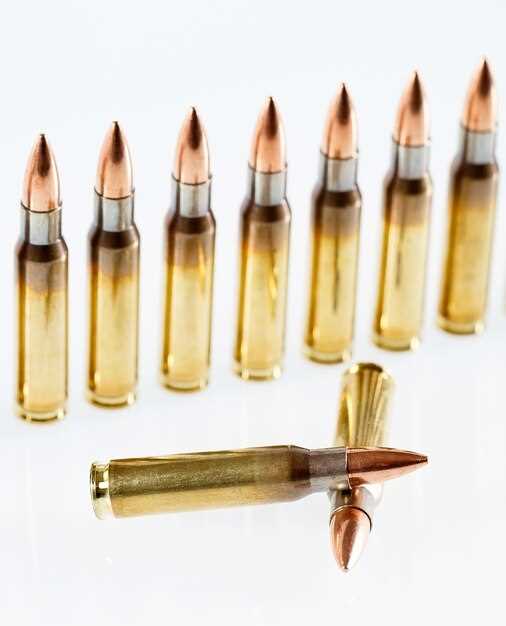
Lead-free ammunition – benefits and drawbacks

The growing awareness surrounding environmental concerns and health risks associated with lead has led to increased regulation and changing laws governing ammunition production and use. As hunters and sport shooters seek sustainable alternatives, lead-free ammunition has emerged as a viable option. This shift not only reflects a commitment to protecting wildlife and ecosystems but also presents its own set of challenges and considerations.
Lead-free ammunition, often crafted from materials such as copper, polymer, or other metal alloys, promises to reduce the contamination of soil and water sources. The benefits of using non-toxic ammo are particularly significant for hunters who frequently operate in sensitive environments where wildlife conservation is paramount. However, while these alternatives are gaining popularity, they also come with their own drawbacks, including cost, availability, and performance differences compared to traditional lead-based options.
This article aims to explore the benefits and drawbacks of lead-free ammunition comprehensively. By examining its implications for hunting practices, compliance with emerging laws, and overall shooting performance, we hope to provide readers with a balanced understanding of this important topic within the shooting community.
Environmental Impact of Lead-Free Ammunition in Hunting

Hunting has long been a popular practice, but the environmental repercussions of traditional lead ammunition have raised significant concerns. Transitioning to lead-free ammunition presents both benefits and challenges in terms of ecological impact.
The use of lead in ammunition poses a considerable threat to wildlife. Lead fragments can poison scavengers and predatory birds that consume spent lead shots or the carcasses of animals shot with lead bullets. This bioaccumulation of lead can result in severe health issues for these animals, often leading to death. In contrast, lead-free ammunition reduces this risk, thereby promoting healthier ecosystems.
Furthermore, lead-free options, often made from materials such as copper or polymer, are less hazardous to soil and water sources. When lead ammunition degrades, it can leach into the environment, contaminating both terrestrial and aquatic ecosystems. Lead-free ammunition minimizes this risk, ensuring cleaner habitats for both hunted species and non-target wildlife.
However, the transition to lead-free ammunition is not without its drawbacks. Some hunters argue that lead-free bullets can be less accurate and may not perform as well in certain conditions. Ensuring a consistent supply of high-quality lead-free options can also be a challenge, potentially leading to higher costs for hunters.
Ultimately, the shift towards lead-free ammunition in hunting signifies a proactive approach to protecting wildlife and preserving natural landscapes. While challenges persist, the environmental benefits of reducing lead contamination present a compelling case for change in hunting practices.
Legal Regulations Surrounding Lead-Free Ammunition Usage
The increasing environmental awareness and health concerns regarding the impact of lead have prompted numerous laws and regulations surrounding the usage of lead-free ammunition. These regulations aim to reduce the risks associated with lead exposure while promoting alternative materials in ammunition production.
Here are key aspects of legal regulations related to lead-free ammunition:
- Federal Regulations: In many countries, such as the United States, federal laws governing the use of lead in ammunition have started to evolve. The Environmental Protection Agency (EPA) monitors and restricts lead in various applications, including ammunition. Shooting ranges may be required to use lead-free alternatives to comply with environmental standards.
- State Laws: Several states have implemented their own laws mandating the use of lead-free ammunition in certain areas, especially in wildlife habitats. For instance, California has enacted laws that require hunters to use non-lead ammunition when hunting in specific regions to protect wildlife and mitigate lead poisoning.
- Local Ordinances: Local governments may also enforce additional regulations regarding ammunition. Certain municipalities have adopted laws that restrict or prohibit the sale and use of lead-based ammunition within their jurisdictions, further promoting the use of lead-free options.
Regulatory frameworks may specify:
- The types of lead-free materials that are acceptable for use in ammunition.
- The contexts in which lead-free ammunition must be used, such as in hunting or at designated shooting ranges.
- Penalties and enforcement measures for non-compliance with lead-free regulations.
As the demand for lead-free ammunition grows, it is crucial for manufacturers, retailers, and consumers to stay informed about the evolving legal landscape. Compliance with these regulations not only ensures legal operation but also contributes to public health and environmental preservation.
Performance Comparison: Lead vs Lead-Free Ammunition in Field Conditions

The performance of lead and lead-free ammunition can vary significantly in real-world hunting scenarios. Lead ammunition has been the traditional choice for many years, praised for its density and ability to create significant stopping power. However, as environmental concerns grow, lead-free options, often made from copper or other metals, are becoming increasingly popular among hunters.
In terms of expansion and penetration, lead ammunition typically performs well, providing a wider wound channel due to its softer nature. This characteristic can lead to quicker kills, which is crucial in a hunting context. However, the environmental impact of lead residues raises concerns for wildlife and ecosystems, prompting many hunting regulations to limit or ban its use in certain areas.
Lead-free ammunition, on the other hand, demonstrates impressive performance as well. Modern formulations can match or even exceed the ballistic performance of lead rounds. These bullets often achieve greater velocities, resulting in flatter trajectories and better accuracy over long distances. Additionally, advancements in bullet design, such as controlled expansion and fragmentation, enhance lethality, making lead-free options viable for various game types.
Field testing indicates that while lead-free ammunition can be reliable and effective, some hunters report differences in performance, especially in terms of recoil and noise. Some lead-free rounds may produce sharper recoil, potentially affecting follow-up shots. Furthermore, the availability of specific calibers and bullet types can be limited, depending on the market.
Ultimately, the choice between lead and lead-free ammunition involves a balance of performance, ethical considerations, and regulatory compliance. Hunters must evaluate their specific needs, the type of game they pursue, and the hunting environment to make an informed decision that aligns with both their performance expectations and environmental responsibilities.




